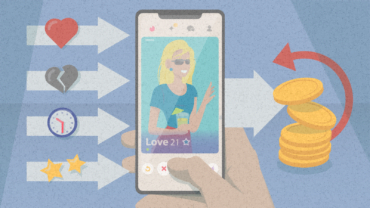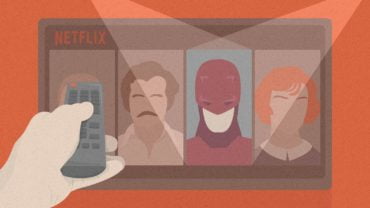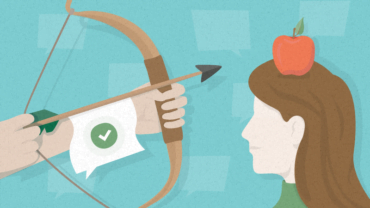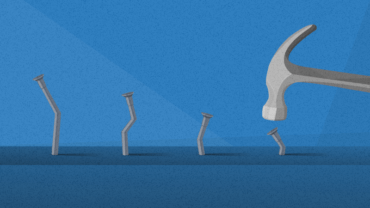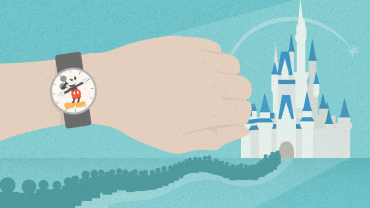Timing: What Could Make or Break Your Nudge
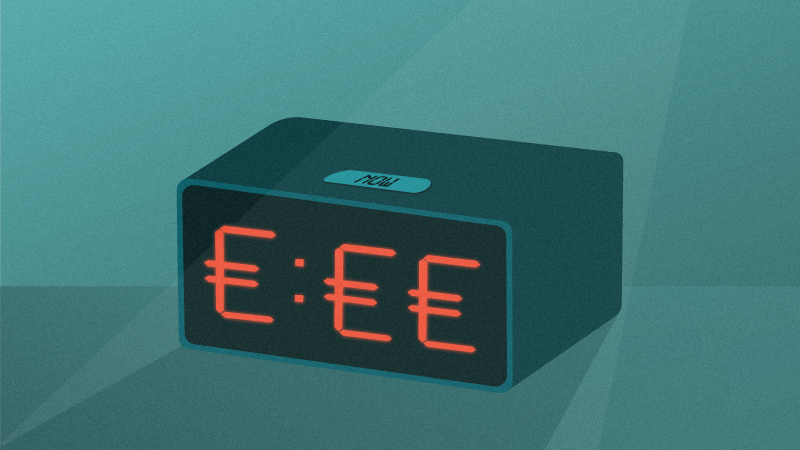
As marketers and designers, we often wonder what makes our customers click and why they choose to engage, make a purchase, and come back for more. We invest in understanding why they ignore perfectly good offers and assume they’re just not that interested. But as it turns out, another factor could be at play here: Timing. Let’s dive into this concept and learn why we often get it wrong and how it can be used to curate nudges more effectively.
In this article, you’ll discover:
- The role of timing in the efficacy of offerings (marketing campaigns, messaging, and nudges) in consumer interactions;
- The reasons for rejecting said offerings, even when they’re relevant or desirable to the consumer; and
- Behavioral principles you can apply to drive higher impact messaging and offerings with a timing enhancement focus.
It’s Wednesday night and you’re walking home from work. It’s also wintertime, which means it’s already dark at 5 pm. You think about what to have for dinner. Is the food in the fridge still fresh? What leftovers do you have? Has that chicken thawed yet? How many dirty dishes will you have to wash before you go to bed or before you leave for work tomorrow morning? So. Much. Effort.

Discover ground-breaking ideas and fascinating solutions.
It’s already been a long day. Suddenly your phone gets a notification. You let out a sigh thinking your manager might have found one more thing for you to do tonight, but instead, you see this:
You weren’t really thinking about ordering in tonight, but now that you see this you think to yourself, “Well, why not? I deserve to treat myself.” You order the usual from your favorite sandwich place on the way home and dinner’s in your hands right when you walk through the door. No meal prep. No dirty dishes. You’re thrilled.
But what makes this e-mail so different from all the other marketing emails you’ve ignored throughout the week, including e-mails sent from the same brand? Timing.
Choice Overload
Choice overload is a result of too many choices being available. It can result in decision fatigue, sticking to the default option, or even avoiding making a decision altogether.
The e-mail meets you in that mindspace of decision-making you’re already in, reducing the cognitive load of figuring out what to do for dinner, and it allows you to feel good about ordering in all while wrapping it up in a neat little package of rationalization.
Let’s explore a broader definition of timing as a principle that can be leveraged by brands to drive.
The principle of timing can be looked at in a few different ways, broken down primarily into external and internal factors of your customer’s context. The goal is to identify what triggers we can use to drive higher relevance of offerings when customers are evaluating whether or not they should act on them.
Timing can manifest as the following:
Same offering + different moment = different response
The external context or environment in which the customer sees your offering highly influences their response. It’s worth considering when the offering will be most relevant for your customer:
- Location: Is it when they’re at home, at a bar, during a commute, at work, at the store, on vacation, or maybe at the airport? Ex: Contextual prompts for upgrades when you’re in a long line at the airport (feeling the pain of it) might be more effective than when you’re in the planning phase of your trip searching for food and activities
- Season: How might the weather affect their cravings and needs? What barriers might seasons create for your customer to access and experience your product? Ex: Cold weather gives us allowances to eat more junk food
- Holidays/Festivals/Personal Occasions: How do holidays align with your offering? Could any part of your outreach feel like a disturbance to your customer? Ex: Spending more on “indulgent” purchases as opposed to functional ones to show care and love for gifting occasions
- Time of Day: A busy weekday morning, relaxed weekend morning, post-lunch afternoon laziness, or a late night… When is your offer going to be top of mind? Ex: A time when energy and ego depletion leads us to lower self control on snacking behaviors
- Moment Within the Product Journey: The customer’s response to an offer might vary depending on where in the product journey they see it. For instance, if it comes too early, they may end up ignoring or rejecting it, not due to a lack of interest but due to poor timing
Example:
The client believed discounts were a great way to retain customers that were canceling their subscription. And while the data showed that in the short-term (over 1-3 months), this was working to retain a portion of the customers that were on their way out, in the long-term (over 6-12 months), it actually posed a big threat to customer loyalty and brand perception.
The client believed discounts were a great way to retain customers that were cancelling their subscription but in the long-term, it posed a big threat to customer loyalty and brand perception.
Behavioral research led to the insight that when the platform offered a discount on a subscription, what mattered most was where in the user journey the customer was getting this offer. If they got it while they were actively using the platform, they said “the platform values me” and were likely to respond positively.
On the other hand, when a customer was on the cancellation journey and presented with a discount, they said “the platform is trying to trap me!” This led to a more transactional relationship with the service, where even if the heavy discount made them stay in the moment, it made them distrustful and distant from the service and less likely to be retained in the long-term.
The question to ask is what external triggers that naturally exist in your customers’ surroundings could you leverage to be most relevant to them while in the moment? Depending on when a consumer interacts with a particular offering, they may have completely opposing responses to the same thing.
All elements of the offering remained constant: the % discount being offered, the cohort, and the platform; the only thing that changed perception was the moment in which it was offered.
Thus, a customer ignoring or rejecting an offering may be a virtue of the timing, and not the offering itself.
Same person + different moment = different mindset
Much like the moment of day, the time of year, or the location of interaction have a significant effect on the decision a consumer makes; their personal mindset, priorities, and internal temperature does too. This effect can work both in favor of and against brands.
When a person is moving through a transitional period or experiencing a change in their personal context, they’re likely to experience a change in their purchase patterns too. These could be life events such as:
- a new job
- a change in their living situation (ex. new home, new neighbourhood, or a change of roommates/cohabitants)
- moving cities
- a new role (ex. becoming a parent or a caregiver to someone elderly
- one’s own mental space at the start or end of the day (ex. when is your customer feeling calm and leisurely and when are they feeling anxious or frustrated?)
Transitions and moments of flux can work in favor of a brand/product that’s trying to engage a new cohort or introduce a new feature but work against a brand that’s trying to reinforce or maintain its relevance and utility in the consumer’s life.
When a person experiences a fluctuation in any life event or situation, the individual’s identity and their needs, goals, and expectations respond to this change and thus are in flux too.
What vs. When
The reasons for rejecting offerings could include:
- The offer is irrelevant because of the moment it arrives in (ex. communication about midnight cravings sent in the morning)
- The offer cannot be positively rationalized by the customer, the customer doesn’t understand why they are seeing this offer (ex. communication about indulgent dessert seen by someone who is trying to stay on a diet). This could be an instance of a relevant offer, but the wrong frame or messaging
- The customer doesn’t have the bandwidth to process the offering or it’s details (ex. many detailed options for subscription types sent late at night when the customer is unwinding, or too many steps in an enrollment journey when a customer might be busy at work)
- The customer is dealing with competing priorities (ex. a parent getting repeat notifications from an app when they’re trying to spend time with their child)
- The customer feeling like the brand is being “creepy” or insensitive because the offering is too relevant (ex. seeing an ad for something right after you discuss it with someone, seeing ads for discounted funeral services after experiencing a loss in the family)
Positive appraisals can be achieved with:
- Meeting the customer in their moment of need
- Meeting the customer in their moment of anticipation
- Creating a moment of reinforcement when a positive experience has occurred to escalate commitment
- Leveraging a transition/life event for revival or retrieval of a “lost” customer
Leveraging moments to drive efficacy
Habits and behaviors change in response to triggers, and these triggers can be both internal or external. Timing can be leveraged to engage with these naturally occurring factors in customer contexts.
Applications in marketing & design:
Two simple ways you can apply this in your research and design solutions might be:
- Shifting from boundaried personas to context-based segments and interventions. Personas may lead to boxing customers into groups without nuance (ex. the assumption that older demographics are not tech savvy), whereas context-based segments allow us to see more nuance in our customers, see them in flux, and better meet them in their decision-making moments.
- Using time-based triggers to be part of the customer’s existing routine or to help them create a more desirable one.
Key Takeaways
- Consumers respond to prompts and offerings differently based on the moment they’re presented.
- The timing of an offering can influence the customer’s decision even more than the details of the offering itself.
- Identify those moments with the least and most receptiveness based on when your offering will be most aligned with the customers goals and needs.
- Periods of transition in an individual’s life can be used to introduce new features, products, or services or to drastically change a relationship with them.

